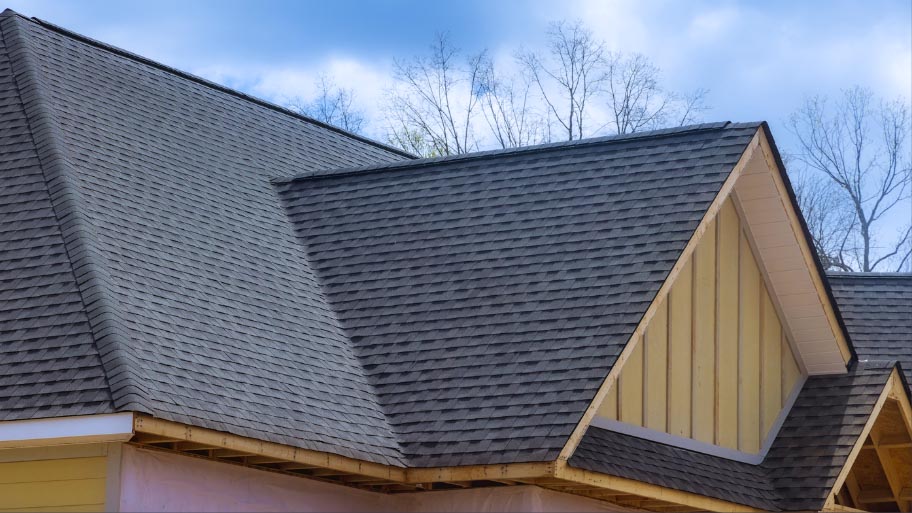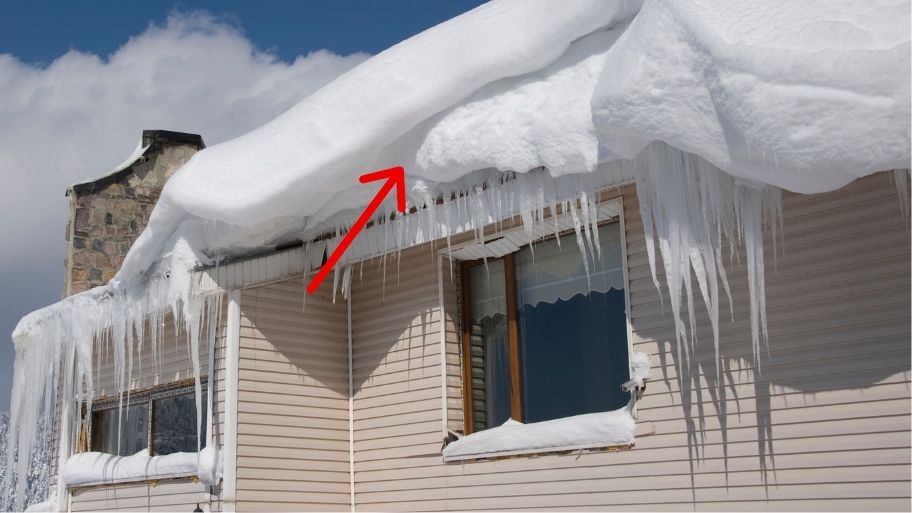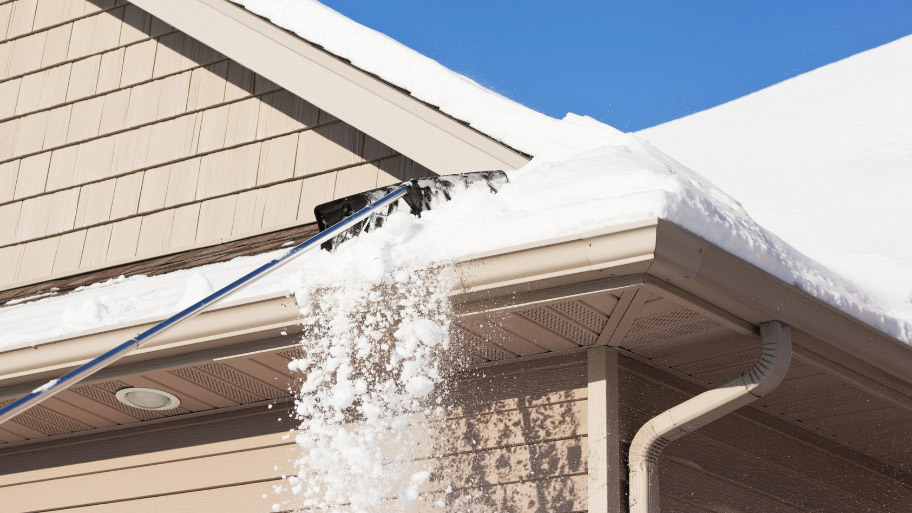Is your roof ready to face the next storm? For homeowners in Ankeny, IA, and the surrounding areas, preparing and weatherproofing your roof is crucial to prevent damage from extreme weather.
In this article, we’ll provide practical tips to help you protect your home from severe storms, heavy snow, and high winds. You’ll discover the importance of professional roof inspections, effective weatherproofing techniques, and the best materials to use.
Understanding Roof Preparation and Weatherproofing
Before diving into the detailed tips, it’s important to understand the basics of roof preparation and weatherproofing. Although they are related, these two processes serve distinct purposes and involve different steps.
What is Roof Preparation?
Roof preparation involves a series of proactive steps taken to ensure your roof is ready to withstand extreme weather conditions. This process is essential for identifying potential vulnerabilities and addressing them before they lead to significant damage.
Roof preparation is the process of inspecting, maintaining, and reinforcing your roof to protect it from the impact of severe weather. This is crucial because a well-prepared roof can prevent leaks, structural damage, and costly repairs, ultimately safeguarding your home and family.
Key Elements Involved:
Professional Inspection: Hiring a professional to thoroughly inspect your roof helps identify and fix issues such as loose shingles, damaged flashing, or weakened structures.
Cleaning and Maintenance: Regularly cleaning gutters and removing debris prevents water buildup and potential damage.
Reinforcement: Securing loose elements and reinforcing weak spots ensures your roof can withstand high winds and heavy snow.
What is Weatherproofing?
Weatherproofing focuses on making your roof resistant to weather elements like rain, wind, and snow. Unlike roof preparation, which is about getting ready for a specific event, weatherproofing is a continuous process aimed at long-term protection.
Weatherproofing entails employing different materials and methods to protect your roof from harsh weather conditions, particularly preventing water from seeping in. Ensuring effective weatherproofing is crucial for maintaining your roof’s durability and preventing problems like water damage, mold growth, and poor energy efficiency.
Key Elements Involved:
Sealing and Waterproofing: Apply waterproof membranes, sealants, and coatings to create a protective barrier against moisture.
Upgrading Materials: Select robust, weather-resistant roofing materials that can withstand local weather patterns.
Insulation: Adequate insulation helps maintain energy efficiency and shields the roof structure from extreme temperature fluctuations.
By understanding the difference between roof preparation and weatherproofing, you can take comprehensive steps to protect your home. In the following sections, we’ll dive deeper into specific tips and techniques to ensure your roof is ready for any weather challenge.
Essential Roof Preparation Tips for Extreme Weather
When extreme weather is on the horizon, it’s crucial to take steps to ensure your roof is prepared. Implementing these strategies can help safeguard your home from potential damage and minimize repair costs. Here are some vital tips to get your roof ready for severe weather:
1. Get a Professional Roof Inspection
Having a professional inspect your roof is a vital initial step in getting it ready for severe weather. Although you might notice some problems on your own, an expert can detect issues that are not easily visible to the untrained eye.
Importance of Professional Inspection:
Expert Evaluation: Trained professionals possess the expertise to thoroughly examine your roof’s condition. They can identify potential problems like loose shingles, damaged flashing, or weak areas that might not be noticeable to an untrained eye, but could pose risks during extreme weather.
Preventative Maintenance: Regular inspections help catch issues early, allowing for prompt repairs. This proactive strategy can prevent minor defects from developing into significant, expensive repairs.
Identifying Potential Issues:
Structural Weaknesses: Inspectors can detect weaknesses in the roof structure that may not be apparent to the untrained eye. These weaknesses could lead to leaks or even structural failure during extreme weather.
Material Degradation: Over time, roofing materials can degrade due to exposure to the elements. Professionals can identify signs of wear and recommend replacements or repairs to ensure your roof remains robust.
2. Remove Debris and Trim Trees
Keeping your roof and the surrounding area clean is another essential step in roof preparation. Debris and overhanging branches can pose significant risks during extreme weather events.
Preventing Physical Damage from Falling Branches:
Prune Overhanging Branches: Limbs that extend over your roof can snap off in strong winds or heavy snow, potentially causing significant damage to the roof. Regularly pruning these branches helps to minimize this hazard.
Remove Vulnerable Trees: Besides pruning, consider cutting down weak or dead trees near your home that could topple onto your roof during severe weather.
Improving Overall Roof Health:
Clear Leaves and Debris: Piles of leaves and debris can block gutters and downspouts, causing water to back up and possibly leak into your home. Regularly cleaning these areas ensures proper water flow and protects your roof from moisture damage.
Post-Storm Inspection: Following severe weather, inspect your roof for any new debris and promptly clear it away to keep your roof in good condition and functioning effectively.
3. Insulate Your Attic or Upper Rooms
Ensuring your attic or top floors are well-insulated is key to protecting your roof’s structure and enhancing energy performance in your home. Insulation functions as a thermal shield, helping to keep indoor temperatures stable by retaining heat during the cold months and keeping it cooler during hot weather.
This, in turn, eases the burden on your heating and cooling systems.
Maintaining Roof Integrity and Energy Efficiency:
Temperature Regulation: Adding insulation to your attic or upper rooms helps keep indoor temperatures steady. It retains heat during cold months and prevents excess heat during summer, protecting your roof from damage caused by temperature swings, such as ice dams.
Boosting Energy Efficiency: Proper insulation reduces the need for heating and cooling, leading to lower energy bills. This not only saves money but also reduces the strain on your roof and HVAC system, helping them last longer.
Benefits of Proper Insulation:
Prolonged Roof Lifespan: Insulation helps maintain a stable environment, minimizing the risk of damage from thermal expansion and contraction, thereby extending your roof’s life.
Enhanced Comfort: A well-insulated home maintains consistent indoor temperatures, ensuring a comfortable living environment for you and your family.
Environmental Benefits: By reducing energy usage, proper insulation lowers your home’s carbon footprint, making it more eco-friendly.
4. Secure and Repair Loose Roofing Elements
Ensuring that all roofing materials are secure is vital for protecting your home during extreme weather. Loose shingles, tiles, or other roofing components can be easily blown off or damaged by high winds, leading to leaks and further damage.
Ensuring Roofing Materials are Secure:
Routine Inspections: Regularly examine your roof to identify any parts that are loose or damaged. Focus on areas near vents, chimneys, and skylights, as these locations are more susceptible to issues.
Prompt Repairs: Address any problems as soon as they are found. Fixing or replacing loose shingles and other elements right away helps to avoid further damage and maintains the roof’s overall condition.
Technique for Reinforcing the Roof:
High-Quality Fasteners: Use durable fasteners that are specifically designed for your roofing materials to keep them secure even in extreme weather conditions.
5. Prepare for Emergency Repairs
Having a plan and materials ready for emergency roof repairs is essential to minimize damage after a severe weather event. Quick action can prevent further issues and protect your home until professional repairs can be made.
Having Materials and a Plan in Place:
Emergency Kit: Keep an emergency repair kit handy, including items such as tarps, roofing nails, a hammer, and sealant. This allows you to make temporary repairs quickly.
Pre-Plan: Develop a plan outlining the steps to take immediately after a storm. This should include a checklist of areas to inspect and actions to take if damage is found.
Immediate Actions Post-Storm:
Ensure Safety: Confirm the area is secure before starting any roof inspection. Watch for hazards like fallen power lines, structural problems, or other dangers.
Temporary Measures: Temporarily cover damaged areas with tarps and sealants. This helps stop water from getting into your home and causing more damage.
Get Professional Help: Contact a roofing specialist quickly to assess and repair the damage. Temporary fixes should be used only until permanent repairs are possible.
Effective Weatherproofing Techniques
Keeping your roof weatherproofed is essential for safeguarding your home from harsh weather conditions. Whether you’re dealing with heavy rain, snow, or strong winds, proper weatherproofing can help prevent leaks, reduce energy costs, and avoid costly repairs.
In this section, we’ll explore practical techniques to protect your roof and ensure it lasts longer.
1. Clean Gutters and Downspouts
Regularly clearing your gutters and downspouts is vital to prevent water accumulation and potential damage. When debris clogs these systems, it can cause water to spill over, leading to leaks in the roof and possible structural issues.
Preventing Water Buildup and Damage:
Routine Cleaning: Regularly remove leaves, twigs, and other debris from your gutters and downspouts. This practice helps prevent clogs, ensuring water flows smoothly and minimizing the chance of overflow and related damage.
Inspect for Issues: Frequently check your gutters and downspouts for any signs of cracks, rust, or loose parts. Promptly addressing these issues ensures efficient water drainage and prevents potential problems.
Regular Maintenance Tips:
Biannual Cleaning: Make it a routine to clear your gutters and downspouts twice each year, particularly in the spring and autumn. Additionally, after significant weather events, examine them to ensure they are free of obstructions and functioning as intended.
Install Protective Guards: To reduce the frequency of cleaning and prevent debris from building up, consider installing gutter guards.
2. Sealing and Waterproofing
Proper sealing and waterproofing are crucial for preventing roof leaks and water damage. By utilizing the correct techniques and materials, you can effectively block moisture.
Techniques and Materials for Effective Waterproofing:
Applying Sealant: Use roof sealant on leak-prone areas like chimneys, vents, and skylights. This creates a watertight barrier, keeping moisture out.
Installing Waterproof Membranes: Place waterproof membranes beneath the roofing material to add extra protection. These are particularly beneficial in regions with significant rainfall or snow.
Preventing Leaks and Water Damage:
Regular Inspections: Regularly check your roof for damage. Look for issues such as cracked or missing shingles and verify that all seals are secure.
Timely Repairs: Fix any problems as soon as they appear. Prompt action can stop minor issues from becoming major problems.
3. Upgrade Your Roofing Materials
Using modern, durable roofing materials can significantly enhance your roof’s ability to withstand extreme weather conditions. Upgrading your materials not only provides better protection but also offers long-term benefits.
Modern, Durable Materials for Enhanced Protection:
Shingles Resistant to Impact: Opt for shingles that are specifically made to endure hail and strong winds. These robust materials are less likely to suffer damage during harsh weather conditions.
Metal Roofing: Choose metal roofs for their exceptional durability and ability to withstand extreme weather. They are also resistant to fire and typically outlast traditional shingles by a significant margin.
Long-Term Benefits of Upgraded Materials:
Increased Longevity: Modern roofing materials often come with longer warranties and life spans, reducing the need for frequent replacements.
Energy Efficiency: Upgraded materials can improve your home’s energy efficiency by providing better insulation, which helps regulate indoor temperatures and reduce energy costs.
Enhanced Curb Appeal: New, high-quality roofing materials can enhance the appearance of your home, potentially increasing its value.
Additional Tips for Homeowners
In addition to physical preparations for your roof, there are other important steps homeowners can take to ensure they are fully prepared for extreme weather.
1. Review Your Insurance Coverage
It’s essential to have the right insurance coverage to protect your home from potential roof damage caused by extreme weather. Here are some tips to help you ensure you have adequate coverage:
Ensuring Adequate Coverage for Roof Damage:
Understand Your Policy: Go through your current homeowner’s insurance policy to determine what it covers regarding roof damage. Pay attention to specific provisions for weather-related issues such as hail, wind, and heavy snow.
Check Coverage Limits: Verify that your policy limits are enough to cover the expenses of repairing or replacing your roof. If needed, consider increasing your coverage to prevent paying out-of-pocket costs.
Explore Additional Coverage: Look into adding endorsements or riders to your insurance policy that specifically address roof damage. These additions can offer extra protection beyond the basic policy.
Tips for Choosing the Right Insurance:
Research Multiple Providers: Investigate and contrast policies from various insurers. Opt for companies with strong reputations and positive customer feedback.
Get Expert Guidance: Talk to an insurance professional to get tailored advice on the best coverage options for your unique situation and region.
Update Your Policy Regularly: Periodically review and modify your insurance policy to account for any changes in your home’s value or structure, ensuring your coverage stays sufficient.
2. Program Important Numbers in Your Phone
Being prepared means having quick access to essential contacts when you need them most. Here’s why you should program important numbers into your phone:
Emergency Contacts for Services and Roofing Professionals:
Roofing Specialists: Keep the contact details of trusted roofing experts in your area. If your roof sustains damage, you can swiftly reach out to someone who can evaluate and fix the issue.
Insurance Provider: Have your insurance company’s contact information readily available to file claims and receive prompt assistance.
Utility Services: Store the numbers of local utility companies to report power outages or service disruptions during extreme weather events.
Being Prepared for Immediate Assistance:
Healthcare Contacts: Save the phone numbers of nearby hospitals and emergency medical services. Quick access to these contacts is vital in urgent situations.
Family and Friends: Maintain contact information for family members or close friends who can offer immediate support if necessary.
Essential Service Providers: Include contact numbers for plumbers, electricians, and other crucial service providers who can help with urgent repairs or issues.
By taking these steps, you can ensure that you’re fully prepared to handle any situation that arises during extreme weather, providing peace of mind and quick access to necessary assistance.
Securing Your Home’s Future Today!
Preparing your roof for harsh weather is essential to safeguard your home and ensure its durability. Implementing the advice in this guide—like clearing gutters, applying sealants, using sturdy materials, reviewing your insurance, and keeping important contacts—will help you protect your home from severe weather.
At JB Roofing, we provide excellent roofing services to keep you ready for any storm. Whether you need an inspection, quality materials, or urgent repairs, we are here to assist you. Our skilled roofing experts are committed to maintaining your roof’s condition, giving you peace of mind and security for your home.
Don’t wait for the next storm. Contact JB Roofing now to schedule an inspection or find out more about our extensive roofing services. Let us help you keep your home safe and secure, ready for any weather challenge.





